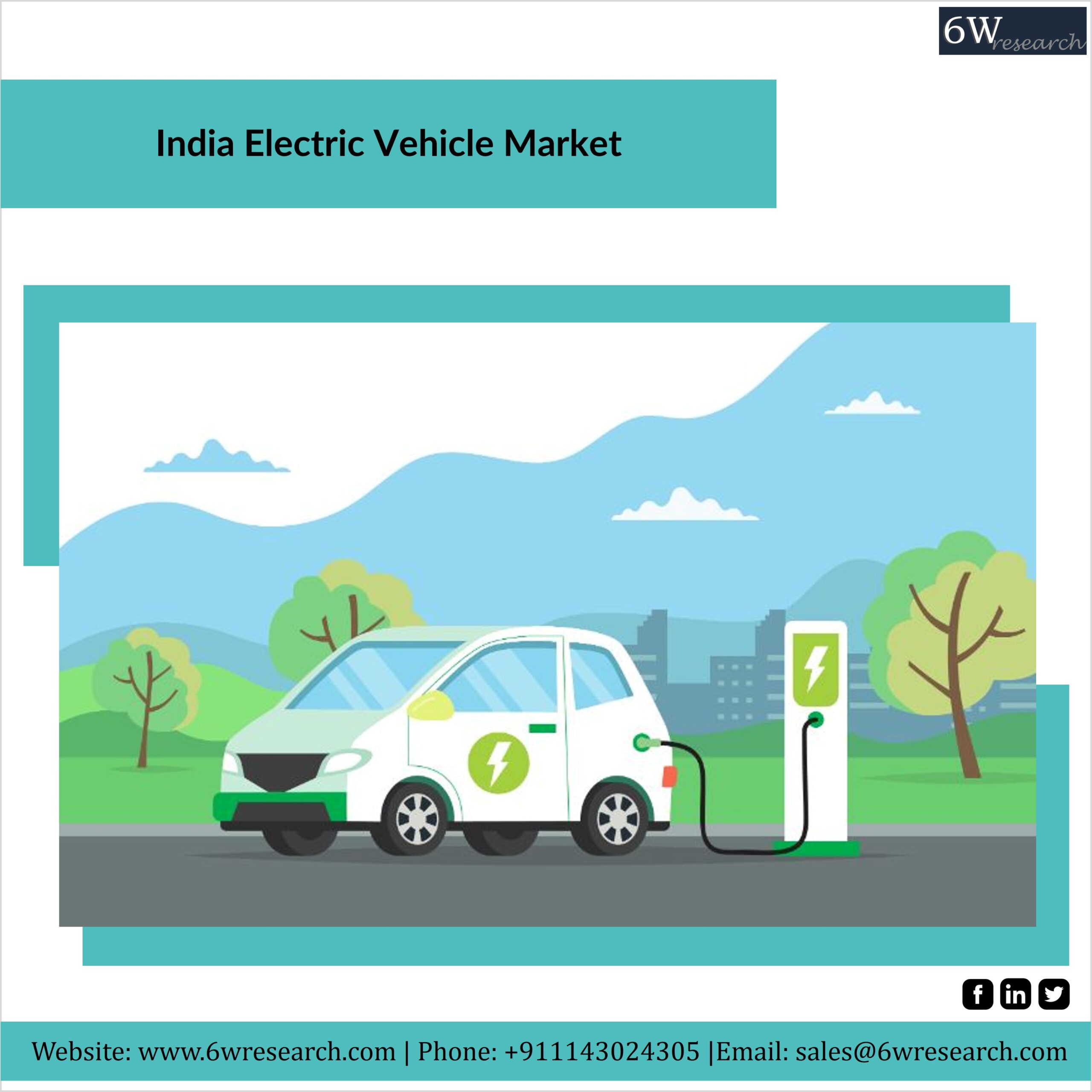
India’s electric vehicle (EV) market has seen significant growth in recent years, and this trend is expected to continue in the coming years. The Indian government has set a target of having 30% of all vehicles on the road to be electric by 2030. The following is a synopsis of the Indian EV market from 2020-2025:
- Market Size: The India Electric Vehicle Marketwas valued at USD XXXX billion in 2020 and is projected to reach USD XXXX billion by 2025, growing at a CAGR of XXXX% during the forecast period.
- Segmentation: The market is segmented by vehicle type (two-wheelers, three-wheelers, and four-wheelers), by power source (battery electric vehicle (BEV), hybrid electric vehicle (HEV), and plug-in hybrid electric vehicle (PHEV)), and by region (North India, South India, East India, West India).
- Two-wheelers: Two-wheelers are the largest segment in the Indian EV market, accounting for around XX% of total EV sales. This segment is expected to continue its dominance in the coming years due to the high demand for affordable and eco-friendly vehicles.
- Three-wheelers: Three-wheelers are the second-largest segment in the Indian EV market, accounting for around XX% of total EV sales. The demand for electric three-wheelers is driven by their use as public transportation and last-mile delivery vehicles.
- Four-wheelers: Four-wheelers are a relatively new segment in the Indian EV market, but the demand for electric cars is expected to increase significantly in the coming years due to government initiatives and incentives, rising fuel prices, and increasing awareness about the benefits of EVs.
- Power Source: Battery electric vehicles (BEVs) are the largest segment in the Indian EV market, accounting for around XX% of total EV sales. The demand for BEVs is driven by their lower operating costs, reduced emissions, and government incentives.
- Government Initiatives: The Indian government has launched various initiatives and incentives to promote the adoption of EVs in the country, such as the Faster Adoption and Manufacturing of (Hybrid &) Electric Vehicles in India (FAME) scheme, which provides financial incentives for EV buyers and manufacturers.
Covid-19 Impact on India Electric Vehicle Market
The COVID-19 pandemic has had a significant impact on the Indian EV market. Here are some keyways in which the pandemic has affected the industry:
- Disruption in the supply chain: The pandemic has caused disruptions in the global supply chain, leading to delays in the delivery of EV components and parts. This has affected the production and sales of EVs in India.
- Reduced demand: The economic slowdown caused by the pandemic has led to a reduction in demand for EVs in India. Consumers are more cautious about their spending and are postponing their purchase of EVs.
- Delayed government initiatives: The Indian government had planned to launch several initiatives to promote the adoption of EVs in the country, but these have been delayed due to the pandemic.
- Challenges in setting up charging infrastructure: The pandemic has made it challenging to set up charging infrastructure for EVs due to delays in construction and supply chain disruptions.
- Increased focus on sustainability: Despite the challenges, the pandemic has also increased the focus on sustainability and the need to reduce pollution. This has led to increased interest in EVs and renewable energy sources.
Overall, the COVID-19 pandemic has had a mixed impact on the Indian EV market. While it has caused challenges, it has also highlighted the importance of sustainable transportation and increased the focus on EVs in India.
Regional Analysis of the India Electric Vehicle Market
The Indian EV market can be analysed regionally, with each region having its unique characteristics and potential for growth. Here is a regional analysis of the Indian EV market:
- North India: North India is the largest market for EVs in India, accounting for around XX% of total sales. The region has a high population density and air pollution levels, making it an attractive market for EVs. Delhi, the capital of India, has been at the forefront of EV adoption in the country, with the government implementing several initiatives to promote EVs, such as providing financial incentives for buyers and setting up charging infrastructure.
- South India: South India is the second-largest market for EVs in India, with states such as Karnataka and Tamil Nadu being key players in the market. The region has a strong automotive industry and a supportive ecosystem for EVs, including a skilled workforce, research and development facilities, and manufacturing capabilities. Additionally, the region has a favourable climate for solar power, which can be leveraged for EV charging.
- West India: West India is a growing market for EVs, with the state of Maharashtra leading the way in terms of adoption. The state has implemented several initiatives to promote EVs, such as providing financial incentives for buyers and setting up charging infrastructure. The region has a strong manufacturing base, which can support the production of EVs and EV components.
- East India: East India is a relatively untapped market for EVs, with low adoption rates compared to other regions. However, the region has a growing population and a need for sustainable transportation solutions, making it an attractive market for EVs. The government has launched initiatives to promote EVs in the region, such as setting up charging infrastructure and providing financial incentives for buyers.
Overall, each region in India presents unique opportunities and challenges for the EV market. However, with supportive government policies, growing awareness about the benefits of EVs, and increasing private sector investment, the Indian EV market is poised for significant growth in the coming years.
Key Players of the India Electric Vehicle Market
The Indian EV market is still in its early stages but has seen the entry of several key players who are driving growth and innovation. Here are some of the major players in the Indian EV market:
- Tata Motors: Tata Motors is one of the largest automobile manufacturers in India and has been a pioneer in the Indian EV market. The company launched the Nixon EV in 2020, which has been well-received by consumers.
- Mahindra Electric: Mahindra Electric is a subsidiary of Mahindra & Mahindra, one of the largest automotive companies in India. The company has been involved in EV manufacturing and research and development for over a decade and has a range of EVs in its portfolio.
- Hero Electric: Hero Electric is one of the leading manufacturers of electric two-wheelers in India, with a range of e-scooters and e-bikes. The company has a strong distribution network across the country and has been expanding its product portfolio.
- Ola Electric: Ola Electric is the electric vehicle arm of ride-hailing company Ola. The company has announced plans to manufacture electric two-wheelers and set up charging infrastructure across the country.
- MG Motors: MG Motors is a British automobile company that entered the Indian market in 2019. The company has launched the MG ZS EV, which has been well-received by Indian consumers.
Overall, these players, along with several others, are driving growth and innovation in the Indian EV market. With increasing government support and growing awareness about the benefits of EVs, the market is expected to see the entry of several new players in the coming years.









